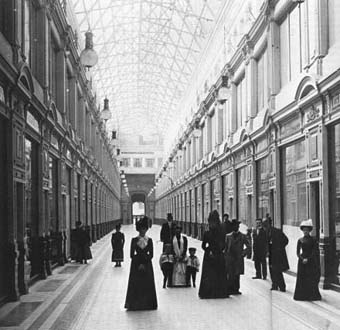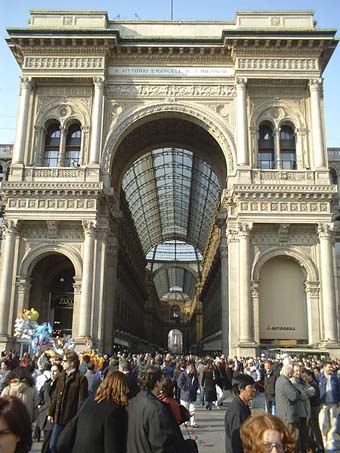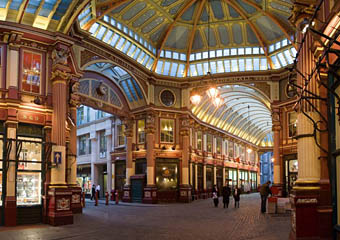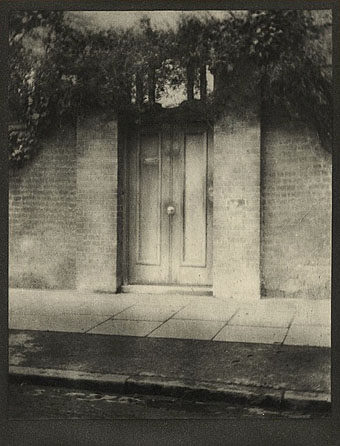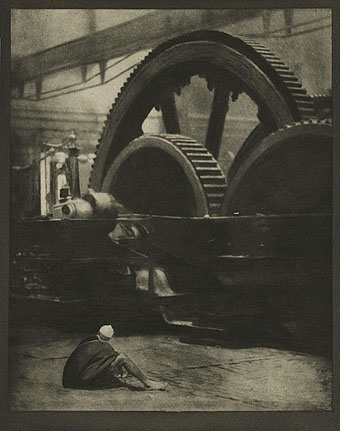It’s just over a year since I refashioned the main site with a better, all-CSS layout. I’ve made some cosmetic changes to this design over the past week that are now complete and uploaded, the new look being a variation on the old, presented in the style of pages from a layout application. I’m sure I’ve seen this done this somewhere before but I forget where so don’t go thinking it’s wildly original. Still needs testing properly across a range of browsers but I’ve not played with the underlying structure very much so everything should work as it did previously.
Passages 2
The Door in the Wall
Photographer Alvin Langdon Coburn (1882–1966) illustrates HG Wells’ wonderful short stories in a rare edition of The Door in the Wall and Other Stories, from 1911. More pictures here.
The Door in the Wall was a true three-way collaboration between the author, the photographer and the typographer, Frederic W. Goudy, who specifically produced his Kennerley Old Style typeface for this book. Designed in the elegant Arts-and-Crafts style, it was printed on French hand-made paper at Goudy’s Village Press in an edition of 600 copies. In fact, only 300 copies contain the full compliment of Coburn’s rich photogravures, due to some being damaged in shipment and being replaced by aquatones. The photographer personally prepared the gravure plates, pulled proofs and oversaw the printing of the edition.
The Door in the Wall.
The Lord of the Dynamos.
Previously on { feuilleton }
• War of the Worlds book covers
Salvador Dalí’s apocalyptic happening
The oft-despised concept album of the 1970s doesn’t come more demented than 666, a double disc set by Greek group Aphrodite’s Child released in 1972. The group featured Vangelis and Demis Roussos among their number (Roussos later turned up on Vangelis’s score for Blade Runner) and this is about the only thing they’re now remembered for, a post-psychedelic fantasy based on the Book of Revelations. So far, so heavy. Searching for information about the album turned up a proposal by Salvador Dalí for a celebratory “happening” to be staged in Barcelona for the album’s world premiere (lyricist Costas Ferris having met Dalí in Paris shortly after the recording):
The main concept:
1. Martial Law shall be ordered on a Sunday, in Barcelona. No one shall be allowed to walk in the streets, or watch the event. No cameras, no TV. Only a young couple of shepherds will have the privilege to witness the event. So, they can later describe it to the people, by oral speech.
2. Giant loudspeakers shall be put in the streets, playing all day the work 666, by Vangelis, Ferris and the Aphrodite’s Child. No live performance.
3. Soldiers dressed in Nazi uniforms, will walk in military march in the streets of Barcelona, arresting who-ever wants to break the law.
4. Hundreds of swans will be left to move in front of the Sagrada Famiglia, with pieces of dynamite in their bellies, which will explode in slow motion by special effects. (real living swans, that should be operated for putting the dynamite inside their belly).
5. Giant Navy planes, will fly all day in the sky of Barcelona, provoking big noise.
6. At 12:00 sharp, in the mid-day, those planes will start the bombardment of the great church, throwing all of their munitions.
7. Instead of bombs, they shall throw Elephants, Hippopotami, Whales and Archbishops carrying umbrellas.
No, it didn’t happen, but if you do hear the album try and think of swans exploding in slow motion while elephants and archbishops rain down from the sky.
Previously on { feuilleton }
• The apocalyptic art of Francis Danby
• The music of Igor Wakhévitch
• Dalí Atomicus
The art of Hubert Stowitts, 1892–1953
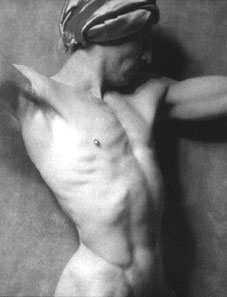
Left: Stowitts photgraphed by Nickolas Muray, 1922.
Hubert Julian Stowitts had a number of careers, including dancer, film actor, painter, designer and metaphysician. As a dancer he worked with Anna Pavlova, who discovered him in California in 1915 and took him on tour around the world. His statuesque figure was used by Rex Ingram for the infernal scenes in The Magician (1926), an adaptation of Somerset Maugham’s rather limp roman-à-clef based on the exploits of Aleister Crowley. The scene with Stowitts as a satyr owed nothing to the book, however, being more inspired by the director’s fondness for the tales of Arthur Machen. Most photos that turn up from this film show Stowitts rather than Paul Wegener who played the sinister alchemist of the title.
Stowitt’s painting developed in the 1930s and included a series of 55 paintings of nude (male) athletes for the 1936 Olympics (see Ewoud Broeksma’s contemporary equivalents at originalolympics.com). Other paintings depicted dance scenes, costume designs, people encountered during travels in the Far East and, in the 1950s, a series of ten Theosophist pictures entitled The Atomic Age Suite.
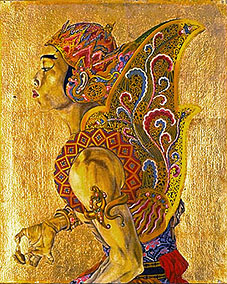
Prince Suwarno in Mahabarata role (1928).
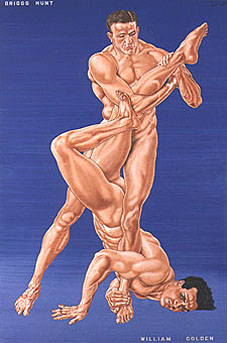
Briggs Hunt and William Golden (1936).
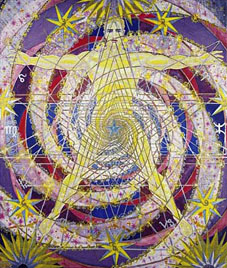
The Crucifixion in Space (1950).
• The Stowitts Museum and Library
• Stowitts at the Queer Arts Resource
Elsewhere on { feuilleton }
• The gay artists archive
Previously on { feuilleton }
• The art of Nicholas Kalmakoff, 1873–1955

